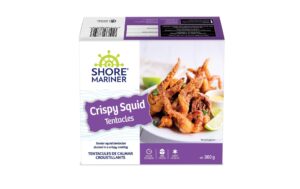Frozen seafood offers a convenient meal solution for busy home cooks. However, many customers are unsure whether their frozen breaded fish is pre-cooked.
Seafood frozen right after it’s caught can be more sustainable than fresh seafood, as it won’t have to travel long distances. This is especially important for ocean species that are overfished. For more pre-cooked frozen seafood, check this out.
Frozen at the peak of freshness
 Frozen seafood may have a bad reputation, but not everyone is equal. High-quality frozen seafood can be as fresh (or even more fresh) as you might find at a fish counter. That’s because seafood is highly perishable. Once it leaves its source, it begins a slow but steady breakdown that can affect the taste and texture of your meal. Flash freezing can essentially press pause on this process.
Frozen seafood may have a bad reputation, but not everyone is equal. High-quality frozen seafood can be as fresh (or even more fresh) as you might find at a fish counter. That’s because seafood is highly perishable. Once it leaves its source, it begins a slow but steady breakdown that can affect the taste and texture of your meal. Flash freezing can essentially press pause on this process.
Unlike older methods of freezing, which cause large ice crystals to form and damage the muscle tissue of seafood, flash freezing is super-fast. This helps to preserve flavour, texture, and nutrients.
When buying frozen seafood, look for well-sealed and undamaged packaging free of freezer burn and ice crystals. You can also ensure the frozen seafood is firm and hard when thawed or cooked. Seafood that is firm and hard to the touch will maintain quality when thawed or cooked.
Frozen for convenience
Seafood provides consumers with essential nutrients, including heart-healthy omega-3 fatty acids, protein and a host of vitamins and minerals. As more consumers seek nutrient-dense foods and look to cut back on time-consuming meal prep, frozen seafood options provide an ideal solution to meet demand. For more pre-cooked frozen seafood, check this out.
Flash-frozen seafood at the peak of freshness preserves texture, flavour and nutritional value. This approach also helps eliminate seasonal limitations on availability.
When selecting frozen seafood, look for well-sealed and undamaged packaging with no signs of freezer burn or ice crystals. IQF (Individual Quick Freezing) or block-frozen products will be more prone to these problems.
Having pre-portioned frozen seafood on hand simplifies meal planning, reduces food waste and makes it easier for new cooks to incorporate fish into their diets. The long shelf life of most frozen seafood also means you can buy in bulk during sales or discounts to take advantage of special pricing.
Frozen for long-term storage
Frozen seafood is less time-sensitive than fresh and can be kept at peak flavour longer. This is because it has been frozen shortly after harvesting, which allows nutrients to be preserved and inhibits the growth of pathogens. It also means that seafood is available year-round and doesn’t have to be sold quickly.
The most common methods of freezing seafood include flash freezing, where fish or shellfish are immediately chilled to subzero temperatures to preserve the flavour and texture. This method can be used for whole fish, fillets or even small products like shrimp. Other techniques for freezing seafood include IQF, where individual products are frozen and block frozen.
When buying frozen seafood, looking for signs of freezer burn or ice crystals on the packaging is essential. A high-quality product should not have these. When cooking frozen seafood, the rule is to cook it as you would freshly catch fish. For fish, this means when the flesh flakes easily with a fork and is opaque, or if you have a probe thermometer, about 140 to 145 degrees. For shellfish, the rule is that clams and oysters should open when tapped, and mussels should close. For more pre-cooked frozen seafood, check this out.
Frozen to be cooked
From a pan-seared fillet of wild sockeye salmon to a hearty side of steamed mussels or shrimp, frozen seafood works just as well as fresh. It’s also more cost-effective than fresh fish, that can spoil quickly.
Sophisticated flash freezing keeps the seafood intact and preserves texture. It’s not uncommon for consumers to prefer the taste of frozen seafood over fresh.
When selecting frozen fish or shellfish, look for high-quality products that have been flash-frozen at the peak of freshness. The package should be tightly sealed and show no signs of freezer burn or ice crystals. Avoid seafood with hints of rigour mortis (twitching or extreme stiffness), as it may have been improperly handled.